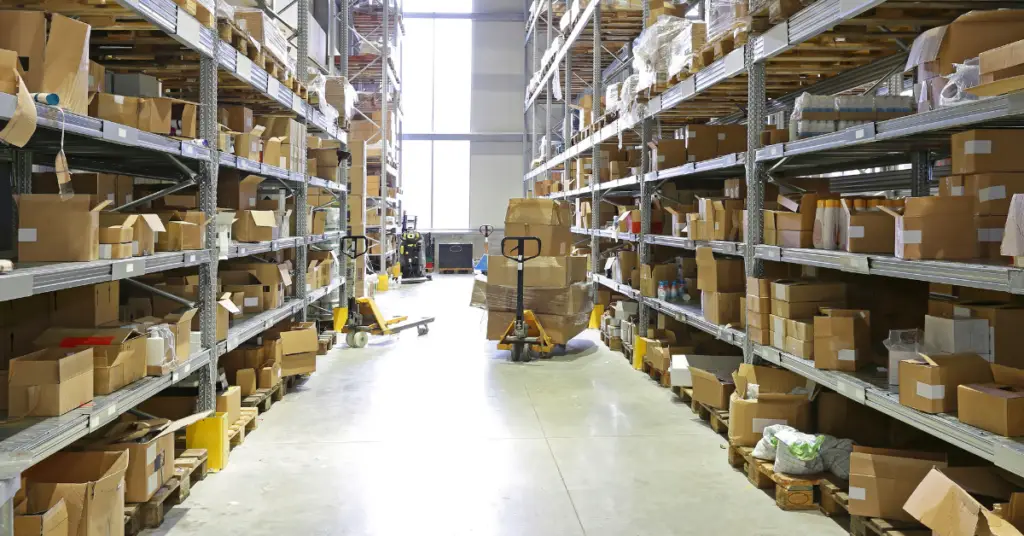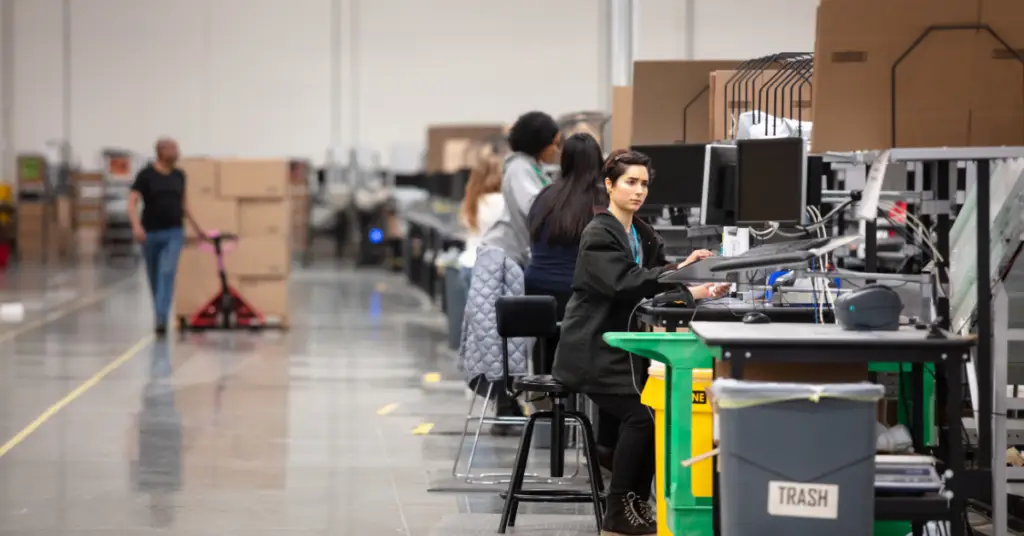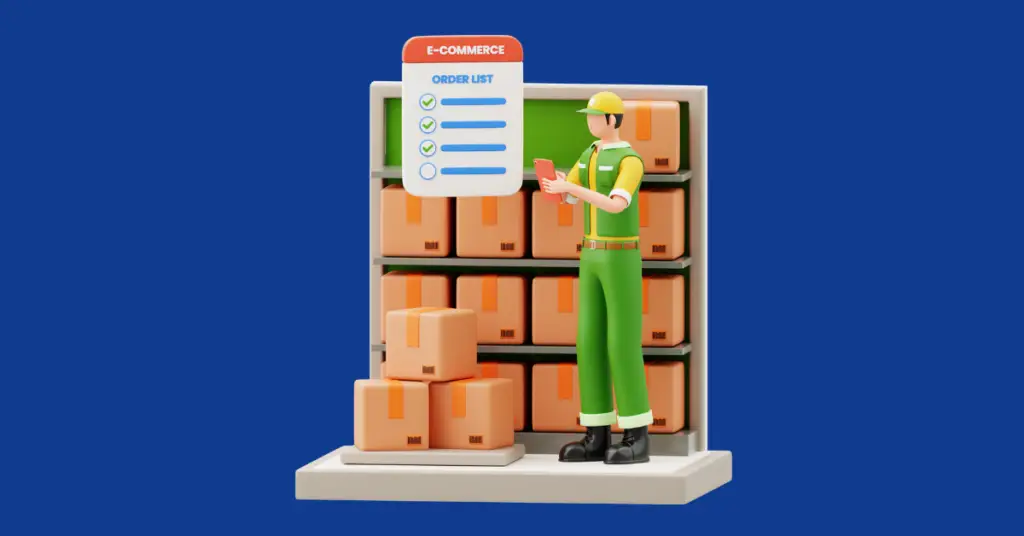In the fast-paced world of e-commerce, fulfillment centers play a pivotal role in ensuring that customers receive their orders promptly and accurately. These centers are not just warehouses; they are the backbone of the order fulfillment process, streamlining operations from inventory management to shipping. Furthermore, fulfillment centers are integral to maintaining efficiency in a business’s supply chain. By coordinating the intricate steps involved in order processing, they help minimize errors and reduce delays. As a result, understanding how fulfillment centers work and their significance can help businesses optimize their supply chain and ultimately improve customer satisfaction. In this blog, we’ll be discussing:
- What is a Fulfillment Center?
- How do Fulfillment Centers Work?
- What is a Fulfillment Warehouse?
- What are the Differences Between Warehousing and Fulfillment Centers
- Benefits of Using a Fulfillment Center
What is a Fulfillment Center?

A fulfillment center is a specialized facility where third-party logistics providers (3PLs) manage the entire process of receiving, processing, and shipping orders for e-commerce businesses. Unlike traditional warehouses that primarily focus on storing goods, fulfillment centers handle every step of the order fulfillment process. This includes not only picking and packing products but also labeling shipments and coordinating with shipping carriers to ensure timely delivery. Fulfillment centers integrate advanced technology and streamlined procedures to enhance efficiency and accuracy, ultimately supporting businesses in meeting customer expectations effectively.
How Do Fulfillment Centers Work?
Fulfillment centers operate through a series of well-coordinated steps designed to ensure that customer orders are fulfilled accurately and efficiently. Here’s a closer look at how these centers work:
Receiving Inventory
The process begins when the fulfillment center receives inventory from a business. The items are checked for accuracy, quality, and quantity before being stored in the facility. This step is crucial as it sets the foundation for accurate order fulfillment.
Storing Inventory
After receiving the inventory, the team stores it in designated areas within the fulfillment center. Unlike traditional warehouses that may store items haphazardly, fulfillment centers use a systematic approach. This method ensures that products remain easily accessible when orders come in.
Processing Orders
When a customer places an order, the fulfillment center’s system automatically generates a pick list. The staff then locates the items from the storage areas, picks them, and prepares them for packing. This step is critical in ensuring that the right products are selected and shipped.
Packing and Labeling
After picking the items, the team packs them using appropriate packaging materials to ensure safety during transit. They then label the packages with shipping details, including the customer’s address and tracking information.
Shipping
After packing and labeling, the fulfillment center hands the orders to shipping carriers for delivery. Fulfillment centers often partner with multiple carriers to ensure on-time delivery, regardless of the destination.
What is a Fulfillment Warehouse?

A fulfillment warehouse stores and manages inventory. While similar to fulfillment centers, fulfillment warehouses may focus more on storing goods rather than handling the entire fulfillment process. In many cases, businesses use fulfillment warehouses as part of their broader logistics strategy, where they store products before transferring them to fulfillment centers for order processing.
What Are the Differences Between Warehousing and Fulfillment Centers?
Although people often use ‘warehousing’ and ‘fulfillment centers’ interchangeably, key differences exist between the two:
| Aspect | Traditional Warehouses | Fulfillment Centers |
|---|---|---|
| Primary Function | Store goods for long-term use and bulk distribution. | Manage the complete order fulfillment process from start to finish. |
| Focus | Maximize storage efficiency and manage inventory levels. | Streamline the picking, packing, and shipping of individual orders. |
| Order Processing | Limited to bulk shipments and inventory management. | Handles individual orders with a focus on speed and accuracy. |
| Technology | Basic inventory tracking and manual processes. | Advanced systems with real-time tracking and automation. |
| Scalability | Scaling requires significant changes or investments. | Easily scalable to handle fluctuating order volumes. |
Benefits of Using a Fulfillment Center

Utilizing a fulfillment center offers several advantages for e-commerce businesses:
Cost Savings
By outsourcing fulfillment to a third-party provider, businesses can reduce costs associated with warehousing, labor, and shipping. Fulfillment centers often have the infrastructure and partnerships to negotiate better shipping rates, leading to significant savings.
Scalability
Fulfillment centers scale with your business needs. As your order volume grows, the fulfillment center can accommodate the increased demand without requiring significant investments in additional resources.
Faster Shipping
Fulfillment centers are strategically located near major transportation hubs, enabling faster shipping times. This is particularly important for businesses looking to offer expedited shipping options to their customers.
Focus on Core Business
Outsourcing fulfillment lets businesses concentrate on their core competencies, including product development, marketing, and customer service, without getting bogged down in the logistics of order fulfillment.
Conclusion
In conclusion, fulfillment centers are essential for the smooth operation of e-commerce businesses. They handle everything from inventory management to shipping, ensuring that customers receive their orders promptly and accurately. By understanding how fulfillment centers work and the benefits they offer, businesses can make informed decisions to optimize their supply chain and enhance customer satisfaction. As e-commerce continues to grow, the role of fulfillment centers will only become more critical, making them an indispensable part of the modern retail landscape.
Related content






